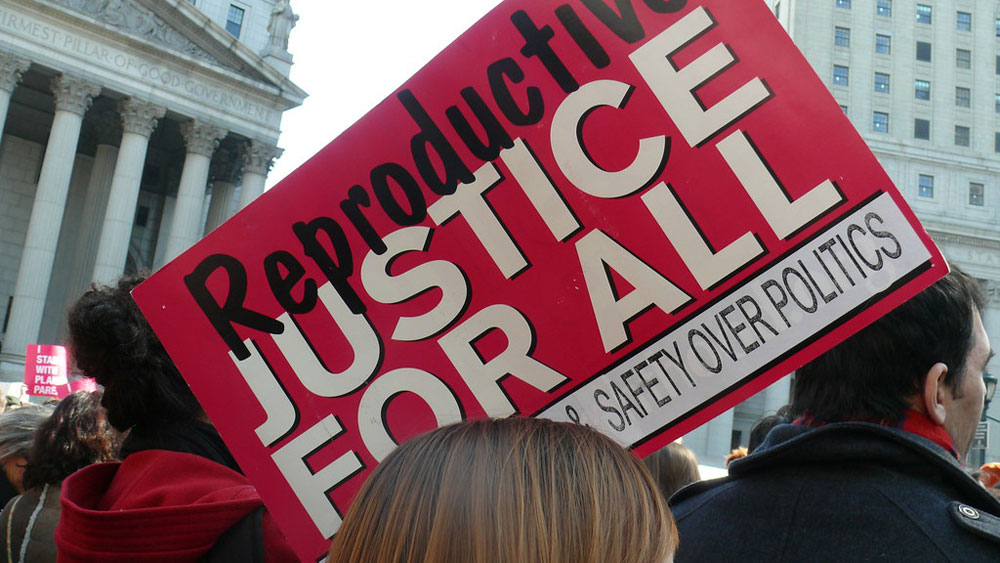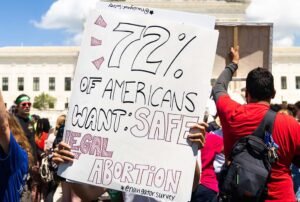
July 11, 2019; Truthout
While some states seem to be in a race to develop the most draconian of abortion laws, others, like Maine, Vermont, New York, Illinois, California, and Nevada, are solidifying their laws to ensure women will have access to abortion in their states. This is good news. But, even before the ink is dry on that legislation, anti-abortion groups are looking for ways to counter those laws. On June 12th, Illinois’s Reproductive Health Act was signed into law by Governor Pritzker. On June 27th, a bill to repeal that law (HB 3850) was filed in the Illinois House of Representatives. It is unlikely to pass, but the issue remains at play.
What do the victories for reproductive rights mean for women amid the defeats, especially women with limited resources in states where they are being passed? And what do these laws mean in states where draconian restrictions are in place? Can one balance out the other? The answer would seem to be a tentative “yes” in some areas of the country and “it depends” in others.
When states like Vermont, Nevada, Illinois, New York, and Maine pass laws that enshrine the right to an abortion, even if in the future the Supreme Court overturns Roe v. Wade, they become the places to go for women seeking abortion care. Women can simply travel to an “abortion-friendly” state for the care they are seeking. While that sounds easy, the economics of the abortion issue make it difficult.
Wisely, the state of Maine recognized the demographics and geography of its populations and the difficulty of getting to a health clinic that provided abortion services in a rural state. In addition to passing a law that allows abortion, it expanded those who are certified to actually be those providers from just physicians to include nurse practitioners, certified nurse midwives, and physician assistants—the three professions regularly grouped together as advanced practice clinicians—which will allow coverage in Maine’s more rural communities. The safety of the abortion procedure is not in question from a medical standpoint; routine dental work is more dangerous than a first trimester abortion procedure.
Sign up for our free newsletters
Subscribe to NPQ's newsletters to have our top stories delivered directly to your inbox.
By signing up, you agree to our privacy policy and terms of use, and to receive messages from NPQ and our partners.
As we celebrate these victories in scattered states, it is important to note that the majority of women getting abortions are more and more likely to be poor. According to the Guttmacher Institute, which conducts a survey of abortion clients every six years, half of all women who got an abortion in 2014 lived in poverty, double from 1994, when only about a quarter of the women who had abortions were low-income. And the cause of this change seems to be predominantly due to new state restrictions on access to abortion care and access to contraception.
“Whenever states enact restrictions, the people who are most affected are the ones with the fewest resources,” said Rachel Jones, a researcher at Guttmacher. She added that women with higher incomes tend to have better access to highly effective contraception.
While there are financial resources for low-income women to pay for abortions via charitable groups and options that cover travel and medical costs, it is still an ordeal to travel to another state for an abortion procedure. And while Medicaid expansion in some states under the Affordable Care Act has increased coverage for some poor women, that, too, may have been lost in the courts this week. A federal appeals court ruled in June that no Title X funds can go to programs that provide abortions or refer to any programs that provide abortion services. Prior to this ruling, this “Domestic Gag Rule” was on hold. This is a huge blow to poor women who get much of their health care and reproductive care from clinics like Planned Parenthood and will now receive no federal funds.
The abortion picture has become more complicated. As some states do everything they can to restrict women’s power to make their own health care decisions, others are fighting to protect it.—Carole Levine













